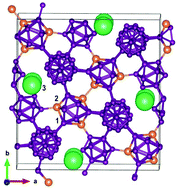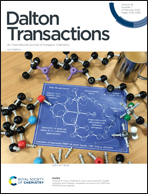Crystal lattice disorder and characteristic features of the low-temperature thermal properties of higher borides
Abstract
Heat capacity CP(T) and lattice parameters a(T), b(T) and c(T) of LuB44Si3.5 borosilicide are experimentally studied as a function of temperature in the range of 2–300 K. The results are compared with those of pseudo-isostructural LuB50 boride. At the lowest temperatures, it is shown that the CP(T) dependence of borosilicide changes linearly with temperature. This is attributed to the effect of glass-like behaviour of the heat capacity due to the disorder in the sublattice of non-metals. The presence of defects in the B–Si sublattice and the irregular form of the cages in the B–Si matrix, which are occupied by Lu3+ ions, lead to the formation of two-level systems (TLS) in the Lu3+ subsystem. The TLS make a characteristic bell-like low-temperature contribution to the heat capacity of borosilicide. We show that there is a wide temperature range (5–150 K) of negative thermal expansion of borosilicide, which is attributed to the influence of quasi-independent vibrations of Lu3+ ions in the cages of the borosilicide crystal structure.



 Please wait while we load your content...
Please wait while we load your content...